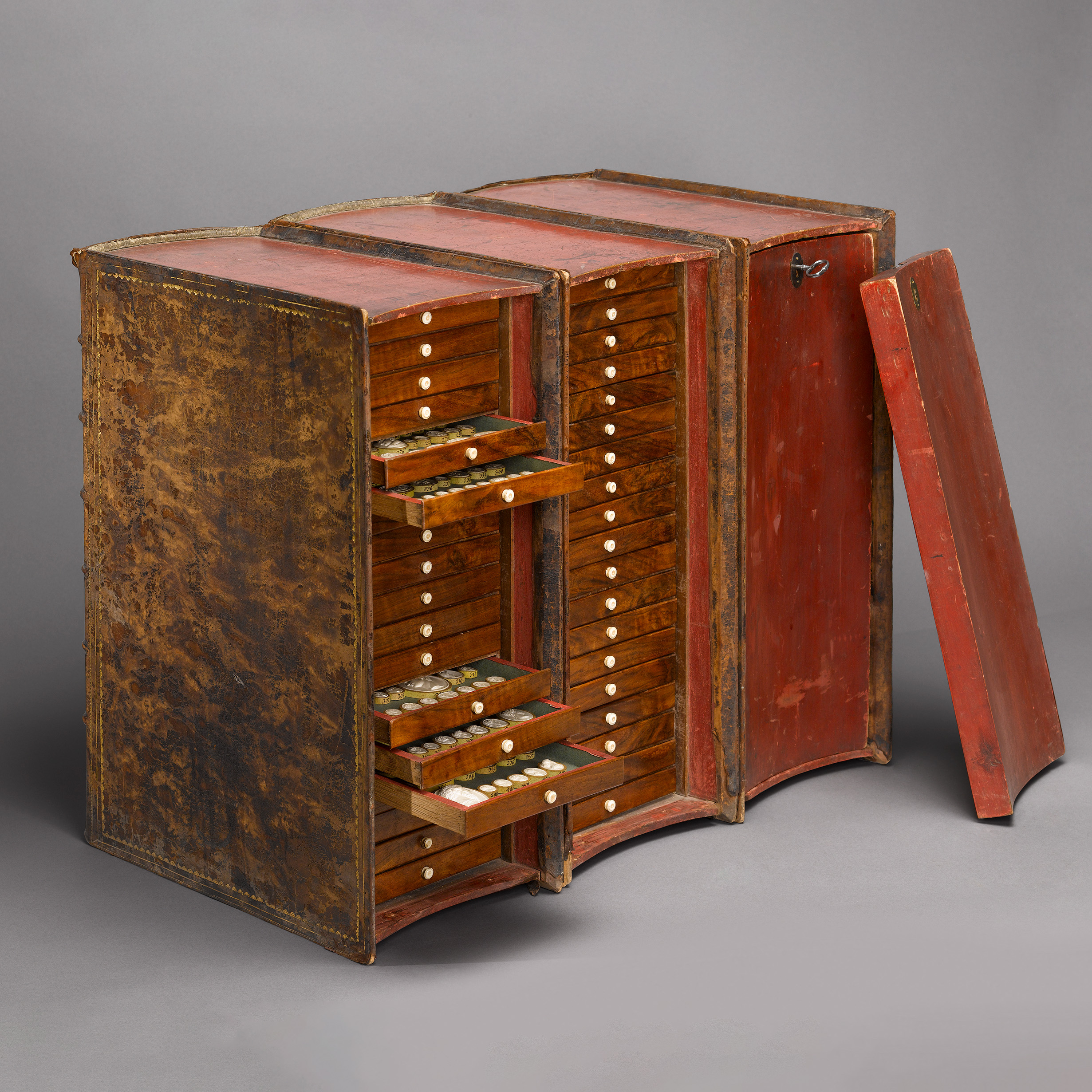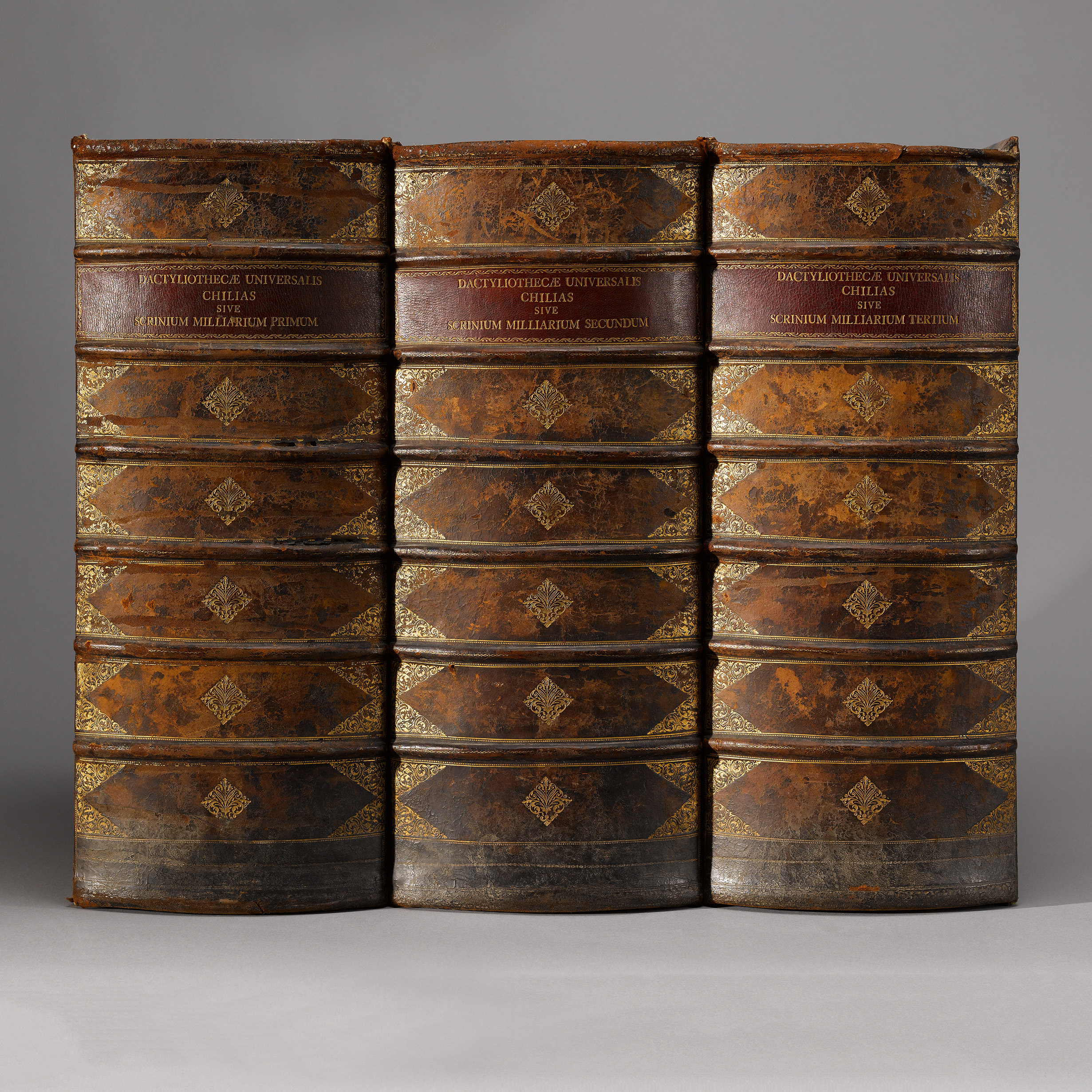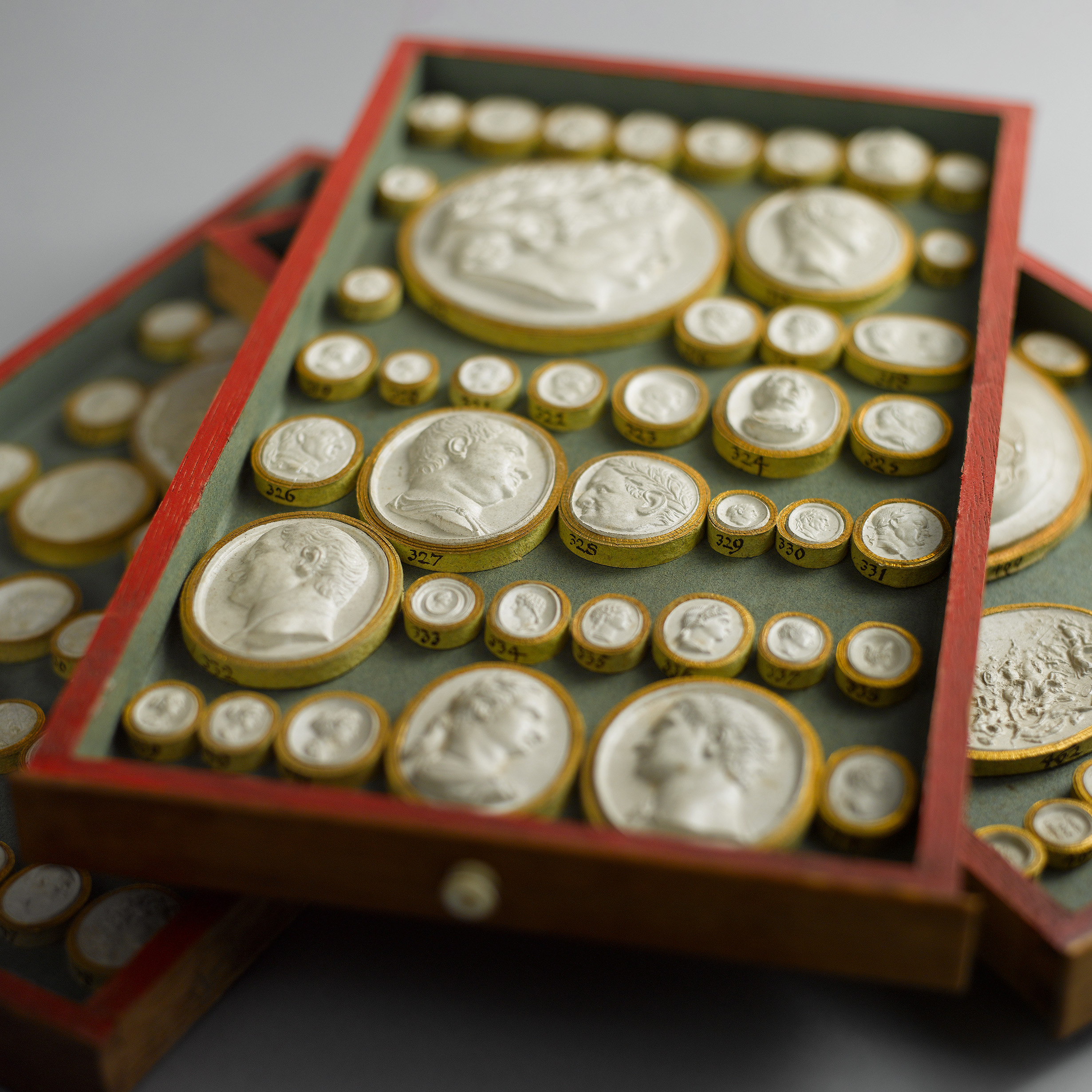Philipp Daniel Lippert (1702–85)
Three book-shaped collector's cabinets: Dactyliotheca Universalis Chilias sive Scrinium Milliarium, Primum / Secundum / Tertium
Dresden, 1755–1762
Individual boxes: : 48 x 19 x 38 cm | Individual drawers:: 1.8 x 15.7 x 29 cm
Provenance: Rheinische Privatsammlung
Ref No: 1805
Three large, leather-bound wooden boxes in the shape of books. The boxes can be closed at the back with a bright red wooden panel. Each box contains 19 wooden drawers, the upper edge of each of which is coloured red, while the bottom is lined with green paper. The impressions glued into the drawers are made of a whitish casting compound produced by Lippert according to his own secret recipe using talc and isinglass. They are framed in yellow paper frames with a ribbed gold edge and the catalogue number is written in black ink on each one. The first and second volumes each contain 1,000 impressions; the third contains 1,004. In the centre of each drawer front is a small, turned ivory knob.
History of Dactyliotheca:
The impression is the mirror image of, and serves the same purpose as, the seal. Gemstone cutters have always made impressions to check and document their work. Collectors exchanged these impressions, or casts, to discuss them or add them to their gemstone collections. A new idea emerged at the beginning of the 18th century: compiling collections of casts of varying sizes. This enabled gemstone enthusiasts who could not afford a collection of originals to view miniature images of ancient gods, heroes and humans from around the world. Such a collection could contain impressions of a quality that could not be achieved with an average original collection. The owners of the gems were usually happy to allow this type of publication as it increased the fame of their collection. In September 1787, Goethe wrote in Rome:
“Such impressions are the greatest treasure and a foundation that the enthusiast with limited means can lay for future great and varied benefit.”
Following the edition of 1,000 impressions published in 1753, of which only two copies are known to exist today, Philipp Daniel Lippert embarked on an even more ambitious project two years later: to bring all the gem impressions he could obtain that were worthy of reproduction to market in three instalments of 1,000. As in the ‘pilot edition’ of 1753, each thousand is divided into mythological and historical sections, with separate numbering for the individual impressions, which makes citation somewhat cumbersome.
In contrast to many later collections of impressions, Lippert’s undertaking, despite the programmatic title ‘Dactyliotheca Universalis’, was decidedly aimed at presenting only impressions of ancient stones wherever possible. In this respect, he proved to be a faithful follower of Winckelmann, with whom he had been in close contact during his time in Dresden. He was probably unaware of how much modern material his collection contained. In the long term, the general interest in ancient glyptics, decisively promoted by Lippert’s activities, contributed significantly to the flourishing of classicist stone carving, meaning that later dactyliotheques accorded a prominent place to modern stone carving.
Lippert’s financially risky project was initially explicitly aimed at a scholarly audience, as he commissioned two eminent experts on antiquity to write the accompanying volumes of text in Latin according to his own specifications: Volumes 1 and 2 were written by Johann Friedrich Christ (1701–1756), a professor of poetry at the University of Leipzig, who died shortly after the publication of the second volume. Volume 3 was written by Christian Gottlob Heyne (1729–1812), who was working in Dresden at the time and was appointed Professor of Poetry and Eloquence at the University of Göttingen immediately after the publication of his section.
Literature:
- Augsburg, 2006, Ausstellungskatalog, Daktyliotheken, Götter & Caesaren aus der Schublade, Antike Gemmen und Abdrucksammlungen des 18. und 19. Jahrhunderts. Hrsg.Valentin Kockel und Daniel Graepler.
- Zazoff, Peter und Hilde, Gemmensammler und Gemmenforscher, Von einer noblen Passion zur Wissenschaft, München, 1983.
- Zwierlein-Diehl, Erika, Antike Gemmen und ihr Nachleben, Berlin 2007. Page 264 – 286.



